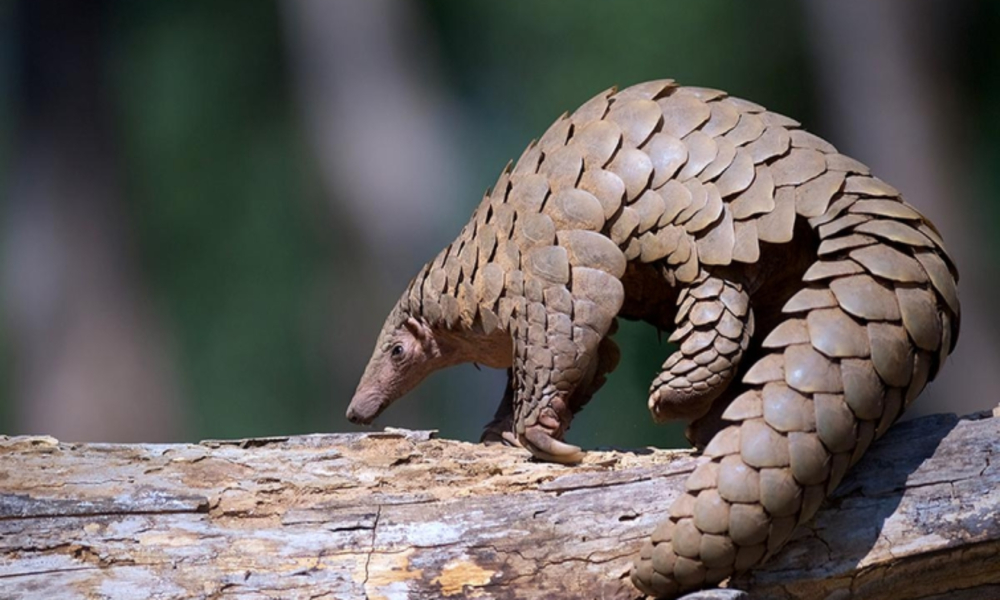News
Newly Discovered ‘Pangolin’ Species: A Potential Ally In The Battle Against Extinction

(CTN NEWS) – Pangolins rank among the most heavily hunted animals globally.
These elusive creatures face a grave threat, yet researchers suggest that the recent identification of a previously unknown species could provide a valuable tool for conservationists in their battle against extinction.
There are currently eight known species of pangolins, with four inhabiting Asia and four in Africa.
These solitary mammals, resembling anteaters, face the illegal threats of hunting and trafficking due to their meat and unique, armor-like scales, which some believe possess medicinal properties.
DNA Analysis Unveils a New and Distinct Pangolin Species
Researchers examining confiscated scales seized in Hong Kong and China’s Yunnan province from 2012 to 2019 have made an astonishing discovery.
By analyzing the genetic markers within these contraband scales, they unveiled an unexpected ninth pangolin species, which they have named Manis mysteria. Their findings were detailed in a study published in the journal PNAS on Monday.
Jing-Yan Hu, a research assistant at Yunnan University’s State Key Laboratory for Conservation and Utilization of Bio-Resource and a co-author of the study, expressed their surprise at this discovery, stating, “We were quite surprised because we did not expect a new species could be discovered from seized scales.”
The research team conducted a structural analysis of 33 scale samples obtained from various confiscations. Among them, five scales were attached to skin, and three to claws, while the rest came from individual scales identified as originating from pangolin tails, backs, bellies, or heads.
Initially, the scales’ appearance suggested they belonged to one of the four known Asian pangolin species.
However, DNA analysis yielded compelling evidence that this was indeed a distinct, previously unrecognized pangolin species, as explained by Hu: “The genomic data provide robust and compelling evidence that it is a new pangolin species distinct from those previously recognized.”
The revelation of a new “large-bodied mammal” species is a rare occurrence, remarked Dr. Aryn Wilder, a conservation genetics specialist at the San Diego Zoo Wildlife Alliance, who was not involved in this groundbreaking research.
Genomics Unveils an Unidentified Orangutan Species in 2017
One of the more recent instances where genomics played a pivotal role was in 2017 when an unidentified species of orangutan was discovered. As Dr. Aryn Wilder points out, while not entirely unprecedented, such discoveries are relatively infrequent.
She further emphasized the credibility of the pangolin study’s outcomes, stating, “I thought the methods were sound, and their findings were quite conclusive.”
Manis mysteria remains shrouded in mystery with limited available information, but its confirmation marks a crucial development for conservation efforts.
According to Jing-Yan Hu, the revelation “significantly augments our existing knowledge of pangolin diversity and evolution.”
This newfound knowledge serves as a call to action for increased conservation efforts and collaborative endeavors aimed at addressing the supply and demand dynamics in the pangolin trade.
This discovery holds significant importance, as noted by Dr. Wilder in an email statement: “The identification of this new species empowers conservationists to focus their management strategies to prevent its extinction.”
Understanding the Extinction Threat at the Species Level
Extinction is a phenomenon that operates at the species level, and once a species vanishes, its unique biodiversity is forever lost.
- Dr. Wilder’s Perspective: Dr. Wilder emphasizes the need for further research into Manis mysteria’s range, behavior, life history, and conservation status. This research is essential for developing effective strategies to ensure the survival of this likely endangered species.
- Cryptic Nature of Manis mysteria: Manis mysteria is described as “cryptic” due to its subtle genetic variations compared to other pangolins. This genetic similarity makes it challenging to distinguish this species solely by its appearance.
- Importance of Scale Analysis: The ability to identify pangolin species through scale analysis is highlighted as a valuable asset for conservation scientists. It helps in accurately differentiating between species, especially when visual distinctions are challenging.
- Advancements in DNA Technologies: The text mentions that advancements in DNA technologies are improving the identification of cryptic species like Manis mysteria. This suggests that scientists can now better differentiate between similar-looking species using genetic analysis.
- Prospect of Discovering More Species: Jing-Yan Hu suggests that the recent discovery of Manis mysteria may be just the beginning, raising the possibility of discovering additional pangolin species in the future. This indicates that there is still much to learn about these creatures.
RELATED CTN NEWS:
China Releases White Paper On President Xi Jinping’s Vision For A Shared Global Future
[VIDEO] Tragedy Strikes As Fire Engulfs Wedding Hall In Northern Iraq, Claiming Over 100 Lives
Italy’s Most Wanted Mafia Boss ‘Messina Denaro’ Dies At 61 After Capture And Conviction































